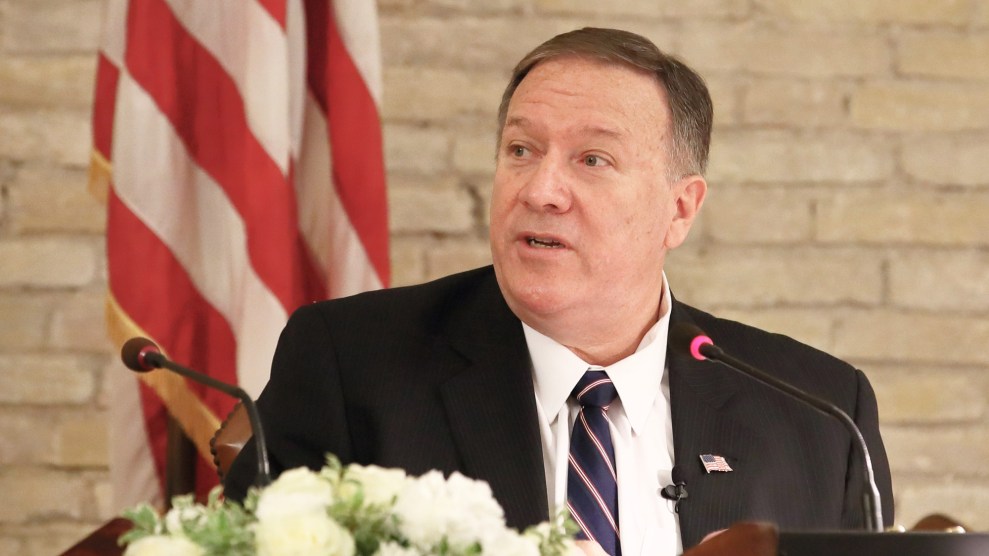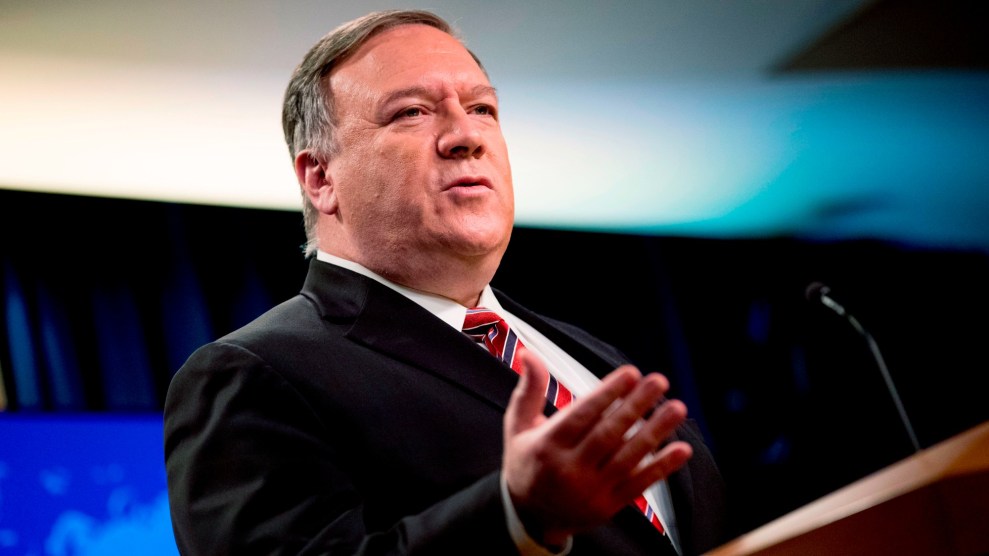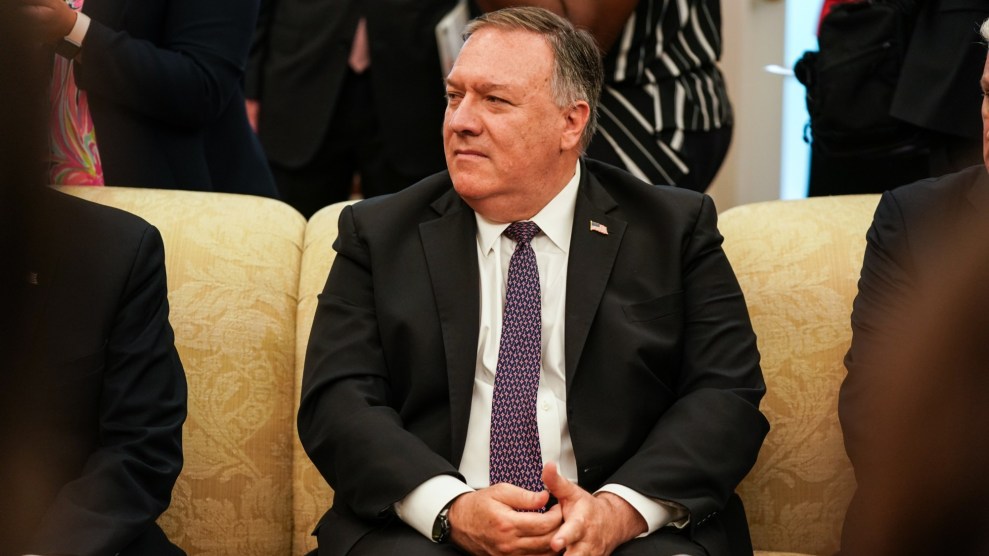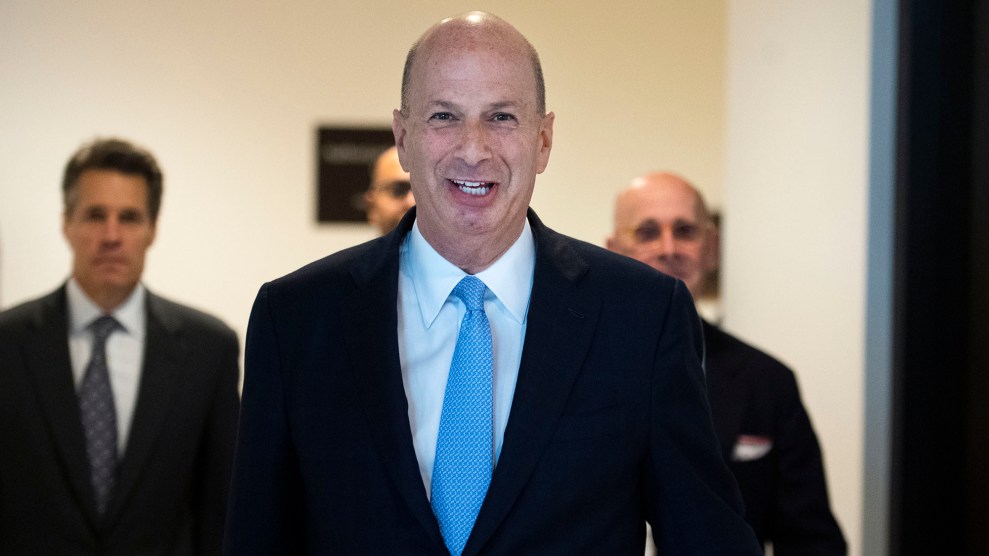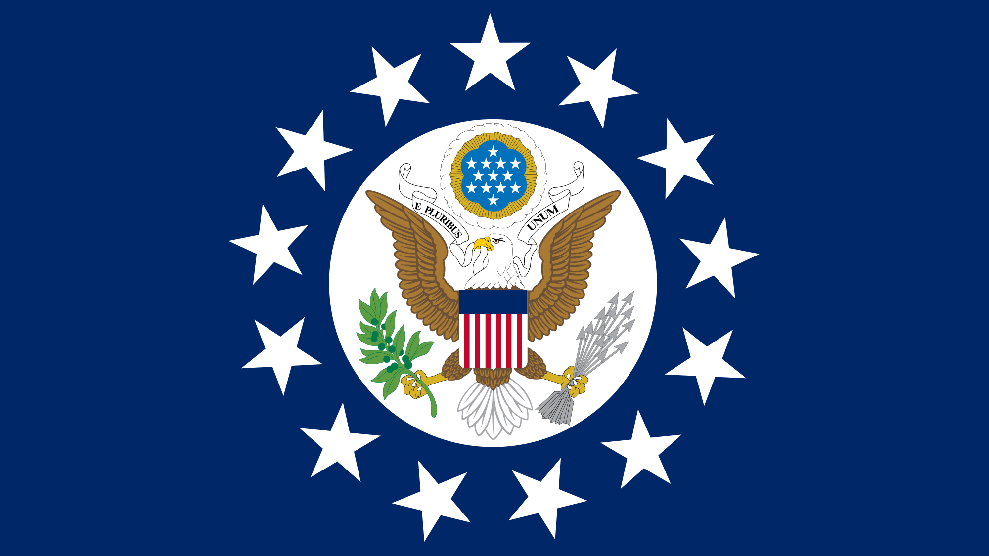
On Friday October 23, the State Department quietly decided to halt all “training programs related to diversity and inclusion.” For department employees, it was a fitting bookend to a presidential administration that has been hostile to the idea of diversity and uninterested in challenging the stereotype of US diplomats as “pale, male, and Yale.”
As Donald Trump nears the end of his term, he leaves behind an ambassadorial corps that is whiter than it’s been in more than 40 years. Only five of Trump’s 189 ambassadorial appointees were Black. No president since John F. Kennedy has appointed fewer Black ambassadors than Trump, according to research compiled by Carlton McLellan, a senior fellow at the Association of Black American Ambassadors.
The three presidents preceding Trump—Barack Obama, George W. Bush, and Bill Cinton—appointed more Black ambassadors than all other presidents since Harry Truman. Trump’s numbers fare poorly even when compared to other one-term presidents. George H.W. Bush and Jimmy Carter both appointed 16 Black ambassadors, more than three times as many as Trump. Gerald Ford appointed just 5 Black ambassadors, but because he only made 97 total appointments, his percentage of appointees who were Black (5.2 percent) was double Trump’s (2.6 percent).
Trump’s disinterest in diversifying the diplomatic corps is not limited to just ambassadors. His State Department currently has zero under secretaries of State or assistant secretaries who are Black, The only Black appointee who served under Trump in one of these high-level roles is Mary Elizabeth Taylor, who resigned as assistant secretary for legislative affairs during the nationwide protests sparked by the killing of George Floyd and Breonna Taylor by police. Trump’s response to the protests, she wrote in a resignation letter, “cut sharply against my core values and convictions.”
Gina Abercrombie-Winstanley, a former US ambassador to Malta, told me that the absence of any Black appointees among the department leadership was “humiliating” and reflective of the Trump administration’s lack of interest in diversifying its ranks. “The fact that that is currently the case means somebody has to be okay with that,” she said.
Under former Secretary of State Rex Tillerson’s watch, department officials discriminated against an Iranian American policy official on the basis of ethnicity, meriting a harsh condemnation from the State Department inspector general (who Tillerson’s successor, Mike Pompeo, later fired). Brian Hook, the State official at the center of the scandal, was later given a high-profile role coordinating Iran policy for Pompeo.
“The tone is set at the top,” Akunna Cook, a former Foreign Service Officer for nearly a decade, told me. “If you have a president who is saying all kinds of racist things, and a secretary of State who is toeing the party line, you’re not going to have a State Department that reflects the values of inclusion.”
The State Department’s woeful representation of Black and minority employees cannot just be laid at Trump and Pompeo’s feet, even though the problem has worsened under their watch. The Foreign Service has long been unrepresentative of the country despite federal law mandating that it reflect “the cultural and ethnic diversity of the United States.” In 1983, Black officers made up just 4.8 percent of the Foreign Service, the Associated Press reported. By 2002, that figure climbed to 6 percent and, in 2018, to 7 percent. The representation of Latino and Asian service members is similarly low—comprising 5 percent and 4 percent, respectively, of the Foreign Service in 2002, 7 percent and 6 percent in 2018.
Trump did not create this problem, but his egregious lack of interest in addressing it has only heightened the concern for career staff, who plan to push Joe Biden’s incoming administration to make it a priority. Biden can diversify the department’s leadership and ambassador ranks, but fixing the Foreign Service requires addressing problems that extend back decades and have persisted through presidential administrations from both parties.
In the early 1990s, the State Department attempted to improve the recruitment and retention of underrepresented FSOs through programs like the Thomas R. Pickering Foreign Affairs Fellowship. Though it has been credited with “attracting talented minority students” to the Foreign Service, its impact did not meaningfully improve the department’s lack of diversity. In 2002, the department added a separate, similar fellowship named after former New York lawmaker Charles Rangel. Most of the half-dozen Black FSOs interviewed for this article entered State as either a Pickering and Rangel fellow and all praised the programs—with some reservations. The programs help recruit a more diverse group of entry-level FSOs, but it doesn’t guarantee that they stay or fully eradicate a culture that still largely privileges white men.
Between 2002 and 2018, white, entry-level FSOs were promoted at a rate higher than comparable FSOs from a racial or ethnic minority group, according to a Government Accountability Office report released last year. Entry-level Black FSOs were less likely to be promoted than either white, Latino, or Asian FSOs.
A few months after GAO published its report, an FSO based in Juarez named Tianna Spears wrote a blog post highlighting the racism she’d encountered as part of her job. Spears’ story, which later prompted a New York Times article, described how Customs and Border Protection officers would pull her over during routine border crossings for spurious, racist reasons. Patrice Johnson, a management analyst who recently left the State Department after nearly 15 years, said Spears’ article resonated with her and other Black FSOs who have at times felt “like I don’t belong belong here.” In response to the post, State officials started a dialogue with employee affinity groups to address concerns about diversity and inclusion, but one employee involved told me that the groups were only given a few weeks to hastily assemble recommendations. Instead of bringing in outside consultants or involving diversity professionals, the department put the burden on affinity groups for coming up with solutions. “I have no training in promoting diversity and inclusion beyond the fact that I happen to be nonwhite,” said the employee, who served on the board of an affinity group for several years. “We are short-changing our efforts if we rely on nonspecialists to handle this.”
In September, following weeks of pressure from State Department employees, Pompeo announced a 50 percent expansion of the Pickering and Rangel fellowships. “That is entirely insufficient,” a former FSO, who graduated from the Pickering program, said. “For me, I thought it was a lazy cop-out, so that they wouldn’t have to have the difficult conversations on how to identify and address and resolve systemic racism throughout the Foreign Service.”
In response to a list of questions, a State Department spokesperson said, “The Department has taken—and continues to take—many concrete steps to increase the diversity of our workforce and foster a more inclusive organization which includes undertaking an employee-led process to craft a new Diversity and Inclusion Strategic Plan (DISP), which focuses on the Department’s current and future efforts in creating a diverse and inclusive workforce, while addressing potential barriers.” This plan, which includes a more robust exit survey program and a diversity requirement for promotion boards, was well-received by some employee advocacy groups.
But the current and former employees who spoke with me for this article all said the lack of a chief diversity officer has hindered efforts at lasting change. “You have essentially this scattered system of responsibility for issues of diversity, which all summed up, leads to nobody being responsible,” the current staffer involved with an employee affinity group said. Legislation co-sponsored last month by Reps. Joaquin Castro (D-Texas) and Deb Haaland (D-N.M.) would create a chief diversity officer and mandate that a liaison from each bureau be appointed to focus on diversity and inclusion.
No one expects the State Department to change overnight when Biden is inaugurated, but creating a chief diversity officer is one of several structural issues his administration could address to make diversity more of a paramount focus at State, though that role would need congressional sign off. The American Academy of Diplomacy, an employee advocacy group, released a list of recommendations in December, including a mandatory review process “for all supervisory officers” and stronger accountability measures “for supervisors and managers who discriminate.” Diversity “at all levels, including senior leadership” will be a priority for Biden and his Secretary of State nominee Antony Blinken, transition spokesperson Ned Price said in a statement. Already Biden has won the appreciation of some longtime State employees by nominating Linda Thomas-Greenfield, a 35-year veteran of the Foreign Service and advocate for diversifying its ranks, as US ambassador to the United Nations.
Still, the effects of Trump’s abominable record on diversity could linger, making it more difficult for ambassadors to convincingly push foreign leaders to crack down on discrimination in their own countries. “If we mistreat marginalized [communities] or sideline minorities in this country, our message goes over like a lead balloon,” Charles Ray, a former ambassador to Zimbabwe and Cambodia, told me.

